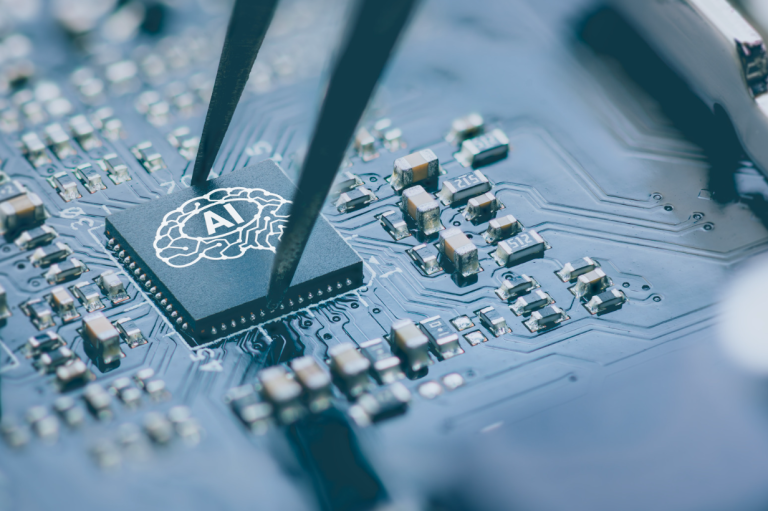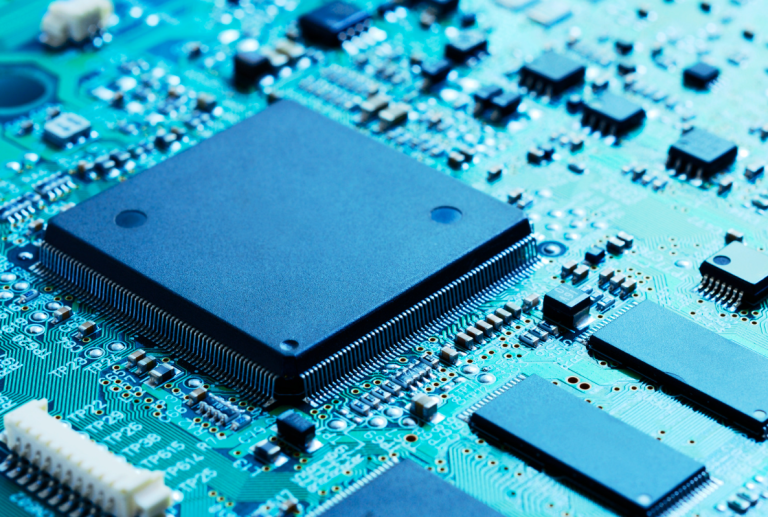Spotlight: The Latest FPGA Technology

More from the Category
Field Programmable Gate Arrays (FPGAs) continue to be a critical component in industries ranging from AI and machine learning to telecommunications and automotive systems. With the adaptability to handle complex processing tasks and the ability to be reprogrammed, FPGAs are evolving to meet the demands of cutting-edge applications. In 2025, the momentum behind FPGA innovation is accelerating - driven by AI advancement, edge computing, and increasingly sophisticated design environments. The global FPGA market is projected to nearly double in size, reaching $13.5 billion by 2032.
FPGA Technology Overview
FPGAs are integrated circuits that can be configured by the user after manufacturing. That flexibility sets them apart from ASICs (Application-Specific Integrated Circuits), which are fixed-function devices. FPGAs provide a customizable platform that can be reprogrammed to handle different workloads, making them ideal for industries where adaptability and performance are essential.
Learn More: FPGAs
Key FPGA Trends in 2025

AI and Machine Learning Acceleration
FPGAs remain instrumental in accelerating artificial intelligence (AI) and machine learning workloads. In 2025, they are becoming even more embedded in AI pipelines, optimized for high-bandwidth, real-time inference, and increasingly integrated into domain-specific accelerators. Their agility makes them a preferred solution for edge AI, where rapid adaptability is required in constrained environments.
New FPGA models are now shipping with integrated AI engines and dedicated blocks for neural network processing, further narrowing the performance gap between FPGAs and GPUs in real-time inference use cases.
Advances in FPGA Development Tools
In 2025, FPGA design tools are enabling faster, more accessible workflows. High-Level Synthesis (HLS) platforms have matured, with support for Python and AI model translation now being added to traditional C/C++ pipelines. AMD’s Vivado, Intel’s HLS Compiler, and newer platforms from startups are offering tighter integration with machine learning frameworks like TensorFlow and PyTorch.
Cloud-based development environments have become the norm. They now support full CI/CD pipelines for FPGA development, allowing real-time collaboration, automated testing, and scalable emulation across globally distributed teams. These capabilities are significantly reducing time-to-market for FPGA-powered products.
FPGAs in Data Centers
In 2025, data centers are adopting FPGAs at a greater scale to optimize workloads such as AI inference, video transcoding, encryption, and financial modeling. Modern FPGA platforms like Achronix Speedster7t and Intel Agilex 9 combine ultra-high bandwidth memory with chiplet-based architecture, enabling high-throughput and low-latency acceleration.
FPGAs are no longer peripheral accelerators but are being deployed in composable infrastructure environments where their reconfigurable logic is orchestrated dynamically based on workload needs. This hybrid approach helps maintain energy efficiency while boosting performance in AI-intensive environments.
Market Growth and Outlook
The FPGA market outlook continues to climb. While the 2021–2028 CAGR was projected at 7.6%, new projections suggest that growth may exceed 8% CAGR through 2032, as AI, IoT, and edge computing drive demand. As of 2025, global revenue is already trending ahead of previous forecasts, with strong adoption in both commercial and defense sectors.
Telecommunications remains a major growth vector, especially with 6G research beginning to materialize. Meanwhile, the automotive sector is using FPGAs in powertrain systems, vision processing, and LiDAR signal analysis for electric and autonomous vehicles. Aerospace and defense continue to rely on FPGAs for mission-critical, reprogrammable computing in space-constrained environments.
Additional Market Insights
Recent analyses further reinforce this growth trajectory. The FPGA market is projected to expand from USD 8.0 billion in 2022 to USD 15.5 billion by 2027, reflecting a robust CAGR of 14.2% during that period. Notably, the flash-based FPGA segment is expected to experience the fastest growth, driven by rising demand for energy-efficient, technologically advanced designs.
Node size trends also point to significant activity in the 20-90 nm range, which is set to maintain a substantial share of the market. Regionally, Asia Pacific is anticipated to lead with the highest growth rate, supported by expanding semiconductor ecosystems, manufacturing capacity, and accelerating adoption across telecom, automotive, and industrial applications.
Learn More: The Worldwide FPGA Industry is Projected to Reach $15.5 Billion by 2027
FPGA Applications in 2025
The versatility of FPGAs allows them to be deployed in a wide range of applications. Key sectors driving FPGA adoption in 2025 include:
• Telecommunications: FPGAs remain essential to 5G infrastructure and are being prepared for early 6G prototyping. Their reconfigurability enables adaptability to new protocols and modulation schemes.
• AI and Machine Learning: Edge AI and hybrid compute environments continue to benefit from FPGA flexibility in real-time inference and model updates.
• Automotive: Advanced driver-assistance systems (ADAS), in-vehicle infotainment, and safety-critical systems increasingly rely on FPGA-based processing.
• Aerospace and Defense: FPGAs are used for software-defined radios, satellite communication, and secure data processing where field-upgradability is critical.
Challenges and Future Directions
While FPGAs offer unmatched flexibility, the complexity of modern FPGA designs continues to rise. In 2025, this is being addressed with greater automation in design flows and AI-assisted optimization tools.
Power efficiency remains a concern, particularly as process nodes shrink and power density increases. However, vendors are introducing dynamic voltage and frequency scaling (DVFS) and low-power modes tailored to AI and IoT applications.
Looking forward, FPGAs are expected to integrate more deeply with quantum accelerators, neuromorphic computing platforms, and chiplet-based modular systems. These developments will extend their relevance well beyond 2030.
Leveraging FPGA Technology in 2025

As we move deeper into 2025, FPGA technology is evolving faster than ever. Advances in AI acceleration, energy-efficient computing, and edge intelligence are unlocking new applications in nearly every sector.
Whether you’re building next-generation AI systems, deploying high-speed communications, or designing autonomous platforms, the latest FPGA solutions offer the adaptability, performance, and scalability needed to lead the future of technology, and Microchip USA is here to support your journey.
Our team has supplied tens of millions of components across diverse industries. Whether you're sourcing a specific part or seeking end-to-end supply chain support, we’re ready to help. Contact us today!









